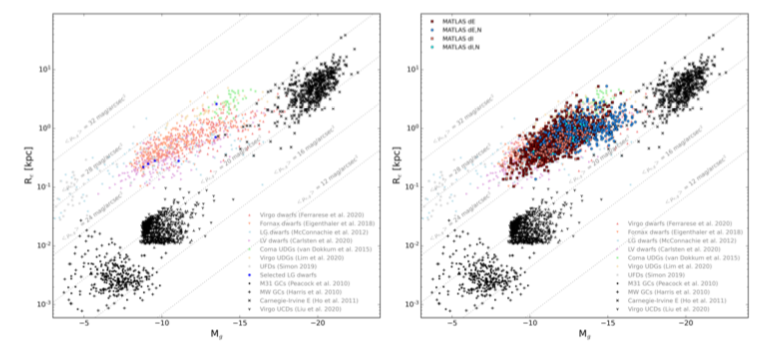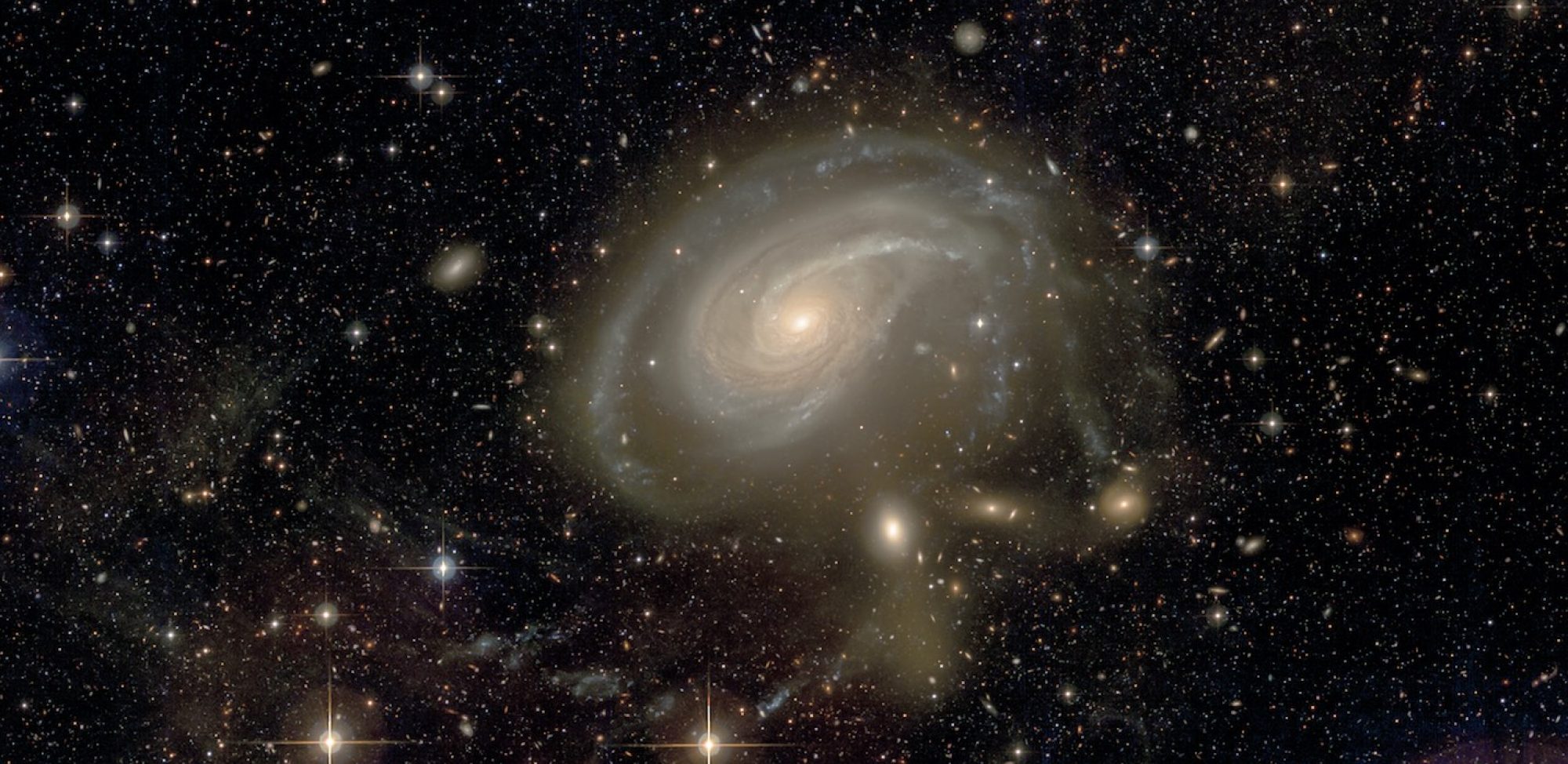
We present a photometric study of the dwarf galaxy population in the low to moderate density environments of the MATLAS deep imaging survey. The sample consists of 2210 dwarfs, including 508 nucleated. We define a nucleus as a compact source that is close to the galaxy photocenter (within 0.5 ReRe) which is also the brightest such source within the galaxy’s effective radius. The morphological analysis is performed using a two-dimensional surface brightness profile modeling on the g-band images of both the galaxies and nuclei.
Our study reveals that, for similar luminosities, the MATLAS dwarfs show ranges in the distribution of structural properties comparable to cluster (Virgo and Fornax) dwarfs and a range of sizes comparable to the Local Group and Local Volume dwarfs. Color measurements using the r- and i-band images indicate that the dwarfs in low and moderate density environments are as red as cluster dwarfs on average. The observed similarities between dwarf ellipticals in vastly different environments imply that dEs are not uniquely the product of morphological transformation due to ram-pressure stripping and galaxy harassment in high density environments. We measure that the dwarf nuclei are located predominantly in massive, bright and round dwarfs and observe fewer nuclei in dwarfs with a faint center and a small size. The color of the galaxy nucleus shows no clear relation to the color of the dwarf, in agreement with the migration and wet migration nucleus formation scenarios. The catalogs of the MATLAS dwarfs photometric and structural properties are provided.
Poulain et al., 2021, MNRAS 506, 549

